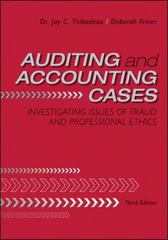Enron was created in 1985 by the merger of two gas pipeline companies: Houston Natural Gas and
Question:
Enron was created in 1985 by the merger of two gas pipeline companies: Houston Natural Gas and InterNorth. Enron’s mission was to become the leading natural gas pipeline company in North America. As it adapted to changes in the natural gas industry, Enron changed its mission, expanding into natural gas trading and financing and into other markets, such as electricity and other commodity markets. In the process Enron made significant changes to several of its accounting procedures.
For example, Enron began using mark-to-market (MTM) accounting for its trading business. Firms in the financial services industry typically used MTM to value their trading portfolios. That is, every day they adjusted the values of their portfolios according to their current values in the market.4 Enron was the first company outside the financial services industry to use MTM accounting.5 In 1992 the SEC’s chief accountant, Walter Scheutz, granted Enron permission to use MTM during the first quarter of its fiscal year ended December 31, 1992.
However, he also indicated that MTM could be used only in Enron’s natural gas trading business.6 Enron’s CFO, Jack Tompkin, wrote back to Scheutz informing him that “Enron has changed its method of accounting for its energy-related price risk management activities effective January 1, 1991 . . . the cumulative effect of initial adoption of mark-to-market accounting, as well as the impact upon 1991 earnings is not material.”7 For some time, there has been debate about whether MTM should be used for assets that are actively traded. For certain assets, like stock portfolios, an active trading market exists and the determination of value is straightforward.
However, the value of natural gas contracts is harder to assess because they often require complex valuation formulas with multiple assumptions for the formulas’ variables, such as interest rates, customers, costs, and prices. These assumptions have a major impact on value and are related to very long time periods—in some cases as long as 20 years.
One of the earliest contracts for which Enron employed MTM accounting was an agreement for Enron to supply Sithe Energies with 195 million cubic feet of gas per day for 20 years for a plant that Sithe was going to build in New York.
The estimated value of the gas to be supplied was $3.5 to $4 billion. Interestingly, by using MTM, Enron was able to book profits from the contract even before the plant started operating.
Case Questions
1. Consider the principles, assumptions, and constraints of Generally Accepted Accounting Principles (GAAP). Define the revenue recognition principle and explain why it is important to users of financial statements.
2. Consider the Sithe Energies contract described in the case. Does the accounting for this contract provide an example of how Enron violated the revenue recognition principle? Why or why not? Please be specific.
3. Based on the case information, do you believe that Enron had established an effective system of internal control over financial reporting related to the contract revenue recorded in its financial statements? Why or why not?
4. As an auditor, what type of evidence would you want to examine to determine whether Enron was inappropriately recording revenue from the Sithe Energies contract?
5. Consider the role of the Enron employee who was responsible for applying MTM accounting rules to electric power contracts, like the Eli Lilly contract. Assuming the employee knew that the use of MTM accounting was beyond the scope of the SEC approval parameters, do you believe that the employee had a responsibility to report the behavior to the audit committee? Why or why not?
Step by Step Answer:

Auditing And Accounting Cases Investigating Issues Of Fraud And Professional Ethics
ISBN: 9780078110818
3rd Edition
Authors: Jay Thibodeau, Deborah Freier





